Plugged In: UMMA's "Art in the Age of the Internet, 1989 to Today" examines creativity in the Digital Age

The traveling exhibition Art in the Age of the Internet, 1989 to Today is on loan to UMMA from the Institute of Contemporary Art of Boston, curated by Eva Respini and Barbara Lee (chief curators) with Jeffrey De Blois (assistant curator). The exhibition premiered in Boston on February 7, 2018, and will next travel to New Orleans Museum of Art in mid-April 2019.
The significance of technology’s impact on lived experience is noted the exhibition announcement on UMMA’s website, stating: “The internet has changed every aspect of contemporary life -- from how we interact with each other to how we work and play. Art in the Age of the Internet, 1989 to Today examines the radical impact of internet culture on visual art since the invention of the web in 1989. This exhibition presents more than forty works across a variety of media -- painting, performance, photography, sculpture, video, and web-based projects.”
Some of the influential artists featured in the gallery are Cory Arcangel, Judith Barry, Juliana Huxtable, Pierre Huyghe, Josh Kline, Laura Owens, Trevor Paglen, Seth Price, Cindy Sherman, Frances Stark, and Martine Syms. Many of the artists have worked with ever-changing technology for decades, but curators cite the year 1989 as a marker for the current global interconnectedness we experience as a result of new technologies. In addition, 1989 was the year of the first satellite that allows us to have the now-ubiquitous GPS, the year the World Wide Web was invented, the year the Berlin Wall came down, and protests in Tiananmen Square. Since social movements and identity politics have become more visible and accessible than ever before.
Be Here "YpsiNow": Riverside Arts Center's "Intersections" exhibit presents a slice of the city

Riverside Arts Center's YpsiNow: Intersections asks this question in its announcement: “What is Ypsi, right now? Its paths, connections, struggles, and joy all interweaving to create the tapestry of Ypsilanti.”
For this second annual iteration of the exhibit -- juried by RckBny, Gary Horton, and Rey Jeong -- the question is answered by Ypsilanti High School students and adult residents working in a variety of media.
The high school students’ photography, collage, paint, ink, and written-word works are clustered on one wall, illustrating the diversity of approach among the teenagers, which is reflective of the overall approach to the exhibition. The adult Ypsilanti artists fill the rest of the gallery with sculptures, installations, and 2D works.
I Want to Believe: "Proof: The Ryoichi Excavations" at UMMA asks us to suspend belief
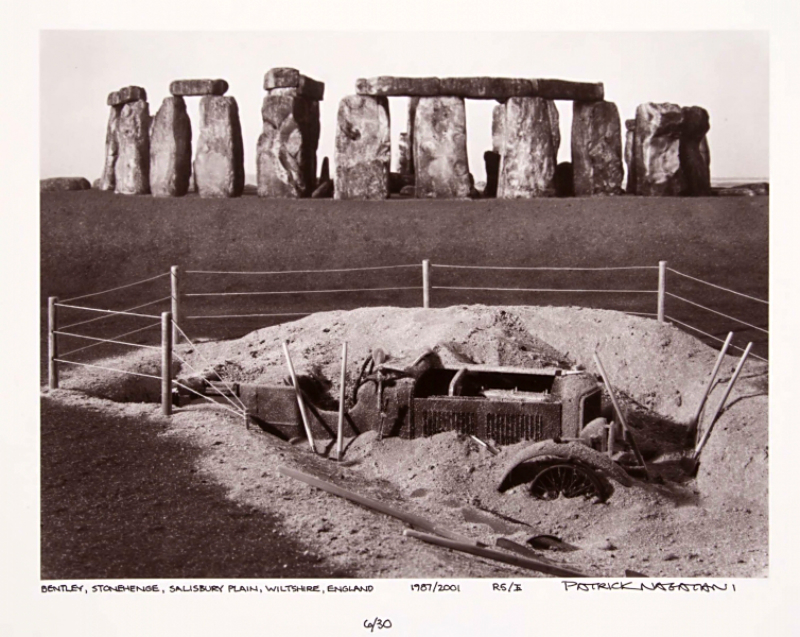
Proof: The Ryoichi Excavations presents artist Patrick Nagatani’s series of staged, minutely detailed photographs of fictional archeological excavations. The University of Michigan University of Art's exhibition announcement summarizes the content of the exhibit, in which Nagatani uses photographs to present “artifacts” from the life of Nagatani’s alter ego, an explorer named Ryoichi:
Nagatani presents a narrative of Ryoichi’s archeological work, supported by images of excavation sites, unearthed artifacts, and Ryoichi’s own journal pages. According to the photographs, Ryoichi discovered evidence of an automobile culture buried at sites across several continents: Stonehenge, the Grand Canyon, and a necropolis in China.
The photographs represent the various facets of the Ryoichi Excavations project, with photographs of journal pages in Japanese, video stills, photographic representations of the excavations, and curatorial wall text explaining the contents of the images. Some of these are displayed in standing glass cases in addition to the gallery walls. Nagatani’s dedication to creating a playful illusion of an archaeological project questions the assumption that photography is a means to convey unaltered, factual images.
Acts of Amore: "Love Has a Thousand Shapes" at A2 Art Center

Right: American Gothic: On the Black Hand Side by Judy Bowman
Love Has a Thousand Shapes is an intimate look at the works of five artists, curated by Andrew Thompson. In the exhibition announcement, the exhibition’s inspiration is cited as having come from Virginia Woolf’s character Lily Briscoe in To the Lighthouse. The name of the exhibition draws from the text itself, in which the phrase described her art-making was an act of love itself. The exhibition, a partnership between Literati Bookstore and the Ann Arbor Art Center, draws inspiration from literary allegories, the announcement also referencing Kurt Vonnegut’s Bluebeard in which a character creates “his final painting, a masterwork of love.” The work in the exhibit explores love “between lovers, friends, family, and with pets, places, and the past. The act of making artwork can be considered an act of love in and of itself.”
With the selection of only five artists, viewers are allowed a more in-depth look at a single artists’ work.
UMMA's "Beyond Borders: Global Africa" asks what it means to be an artist from the continent
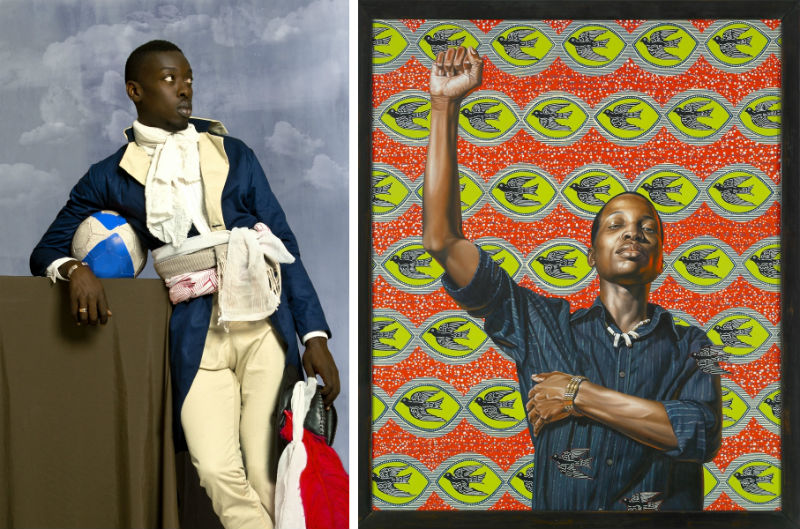
UMMA’s exhibition Beyond Borders: Global Africa extends a conversation recently addressed in Unrecorded: Reimagining Artist Identities in Africa. The newer exhibit asks the audience to consider the roles of contemporary artists, as the subtitle Global Africa suggests, along with a reconceptualization of previously narrow definitions of “African art” or “African artists.” UMMA director Christina Olsen states that the pieces on display, many of which belong to UMMA, “ask questions about what it means to be an ‘African’ artist and make ‘African’ art.” Included in the show are photographs, paintings, installations, and sculptures. This exhibition includes “approximately 40 works of art drawn from UMMA's African art collection and from private and public holdings around the world, including the eminent Contemporary African Art Collection assembled by Jean Pigozzi of Geneva, Switzerland.”
Stamps Gallery's "Have We Met?" explores how institutions can create inclusive, creative spaces
Stamps Gallery’s Have We Met? Dialogues on Memory and Desire explores the artworks of political and social groups that have helped shape Ann Arbor. Curated by Srimoyee Mitra, the large gallery is packed with posters, paintings, digital art, sculptures, installations, video, and spaces for visitors to sit and research social movements and histories represented by the artists. The exhibit takes the gallery space into question, with installations that invite viewers to physically engage with their surroundings throughout the gallery.
The exhibition specifically draws from social movements in Ann Arbor, such as the anti-war and civil rights movements, and the experimental art collective The Once Group. Have We Met? features materials from University of Michigan’s Labadie Collection and the Bentley Library, in addition to “radical artworks by diverse, multigenerational artists and designers whose works are deeply influenced by the ideas of freedom and self-determination; rewriting canonical accounts of history.”
Exploring the Ritual and Routine: Ann Arbor Art Center's "Rinse/Repeat"
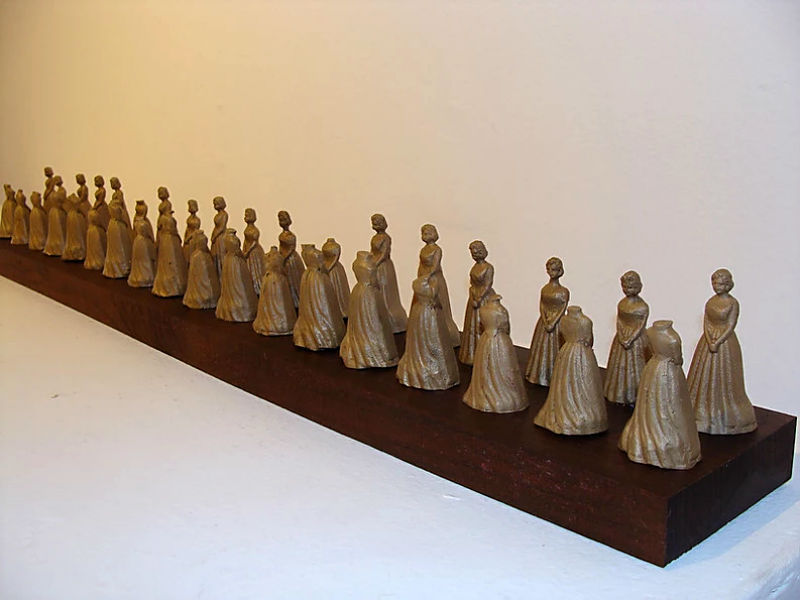
The Ann Arbor Art Center’s most recent juried exhibition asks: “When does action transcend habit to become something more meaningful? RINSE/REPEAT explores concepts of ritual or routine in creative practice, where the experience is intentional, sacred -- not solely focused on the product or outcome, but on the set of actions.”
The Art Center frequently hosts exhibitions curated by guest jurors, and like many of its recent exhibits, the show continues to bring a variety of multi-media works by contemporary artists, both local and non-local. The exhibition as a whole has a strong emphasis on fiber arts and less traditional “fine art” media.
Juror Marlee Grace conceptualized RINSE/REPEAT, which addresses artists’ processes, and has selected a group of pieces that, in different ways, address the often intense, repeated processes behind the finalized works. Grace is most known for her Instagram account “Personal Practice,” where she posts videos of herself exploring movement, and many works in the show comment on movement and motion, approaching the subject of repetition literally.
Gifts of Art's summer exhibitions keep on giving
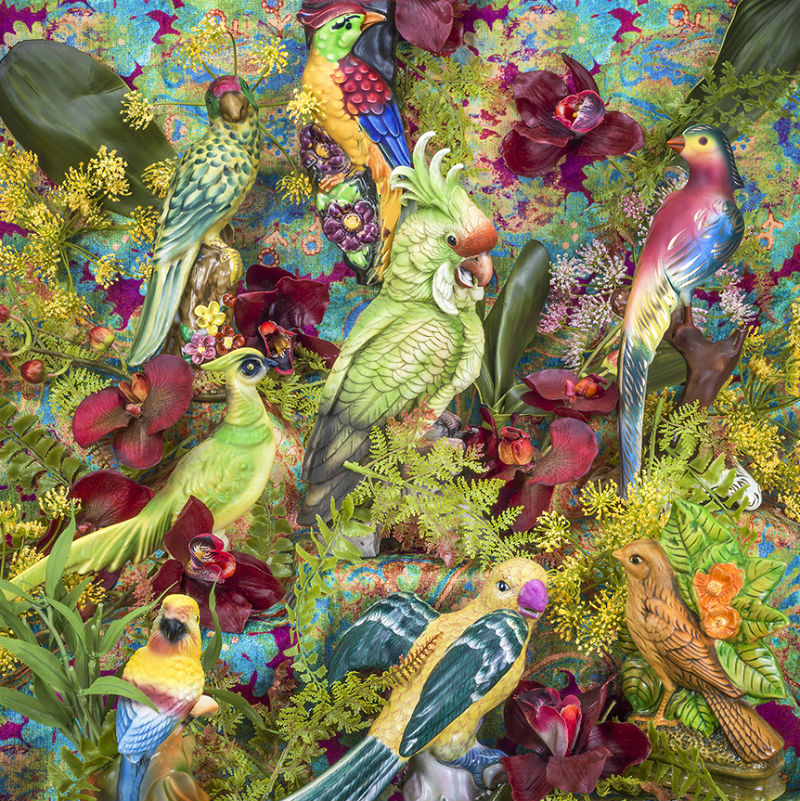
With eight different exhibits in its summer presentation, Gifts of Art continues to be an important part of the University of Michigan's creative ecosystem. The exhibitions, which run through September 9, serve as an important facet of the hospital, bringing the gallery experience to patients, staff, and visitors.
Refuge and Isolation: Ypsi Alloy Studios' "Sanctuary" at Ann Arbor Art Center
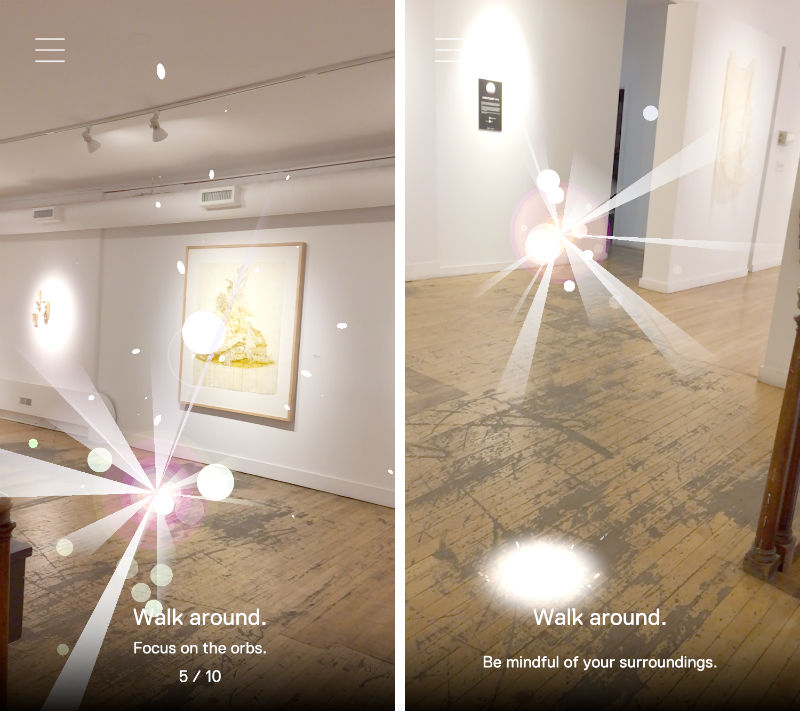
Ann Arbor Art Center’s Sanctuary exhibition features some pieces that focus on the meditative aspect of the titular concept, but other works confront the “double-edged sword” of what "sanctuary" means, lending to the gallery’s successful interpretation of a broad theme.
Featuring work from 15 artists from Ypsi Alloy Studios, the show is described by the gallery as:
Found-Object Art, Found: "Materials on Hand: The Art of Ellen Wilt" at Stamps Gallery
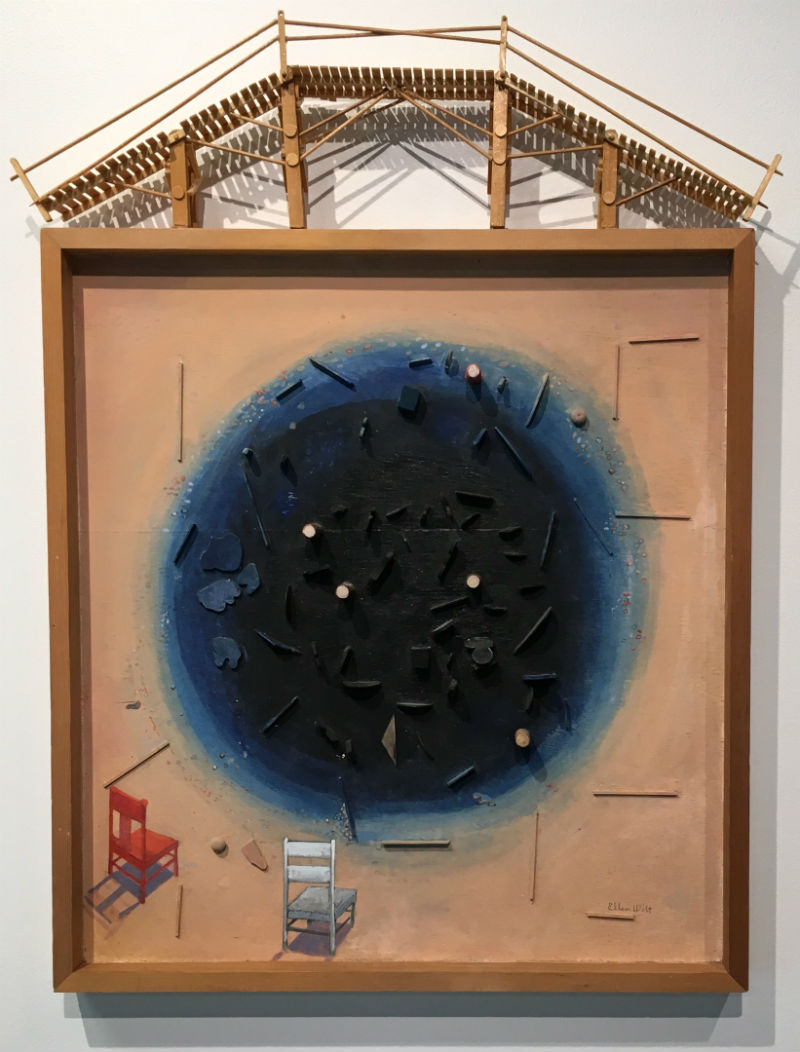
The U-M Stamps Gallery’s exhibition Materials on Hand: The Art of Ellen Wilt brings together a remarkable variety of works executed over the Ann Arbor artist's long career.
Wilt originates from Pittsburgh, PA, but moved to Ann Arbor in 1949, where she has been active in the arts community since. She attended the University of Michigan, where she obtained both her BFA and MA from the Stamps School of Art & Design.
The Stamps gallery has gathered an impressive collection of Wilt’s work, highlighting her importance in the community. Collectors have loaned the gallery many of the works, allowing a rare glimpse into works that have been in private collections for decades. The gallery space itself is opened up, allowing for the inclusion of “over 50 carefully selected works from personal and private collections that highlight Wilt’s artistic contributions to Southeast Michigan.”


































